Simon Rogers | January 14, 2014 | cartographers, CC3, CC3 Plus, development, history, Mike Schley
CC3+ incorporates a new complete symbol set from expert cartographer Mike Schley. We’ve worked with a number of professional cartographers to create Campaign Cartographer styles, and the process is now pretty slick. We are either adapting an existing style (as with our recent World War 2 annual issue) or creating one from scratch. This is the process:
1. We take a cartographer’s existing map, or the cartographer develops a new map style, always by creating a small map sample. Here is an early one Mike Schley produced for the new CC3+ overland style.
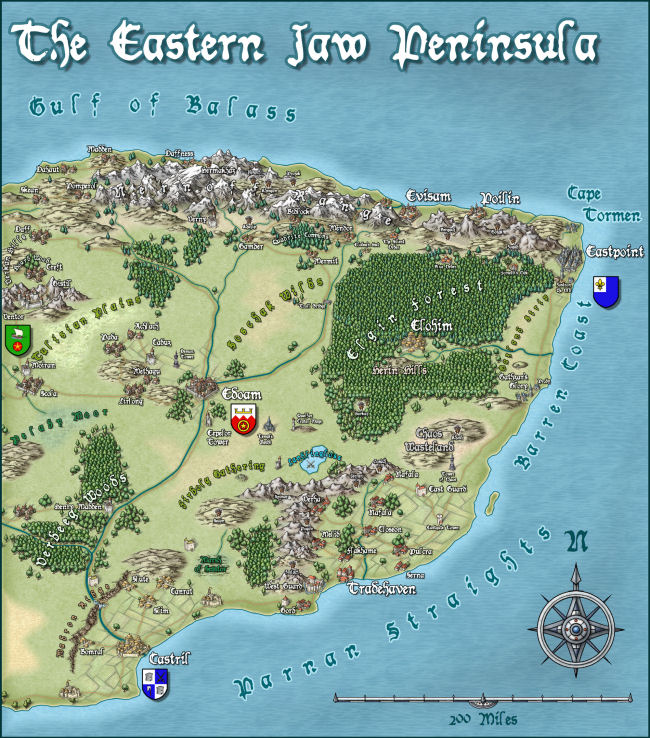
2. Once we’ve approved this, the cartographer adds more symbols and tools to the example map, and then does more as stand alone files. For a full ad–on or symbol set, this is a very big job. Usually the cartographer works in Photoshop, with layers on, so we can easily extract elements to create CC symbols and drawing tools.
3. Once the map-maker has finished, Ralf duplicates the style in CC, developing the set of drawing tools and adding effects to match the original.
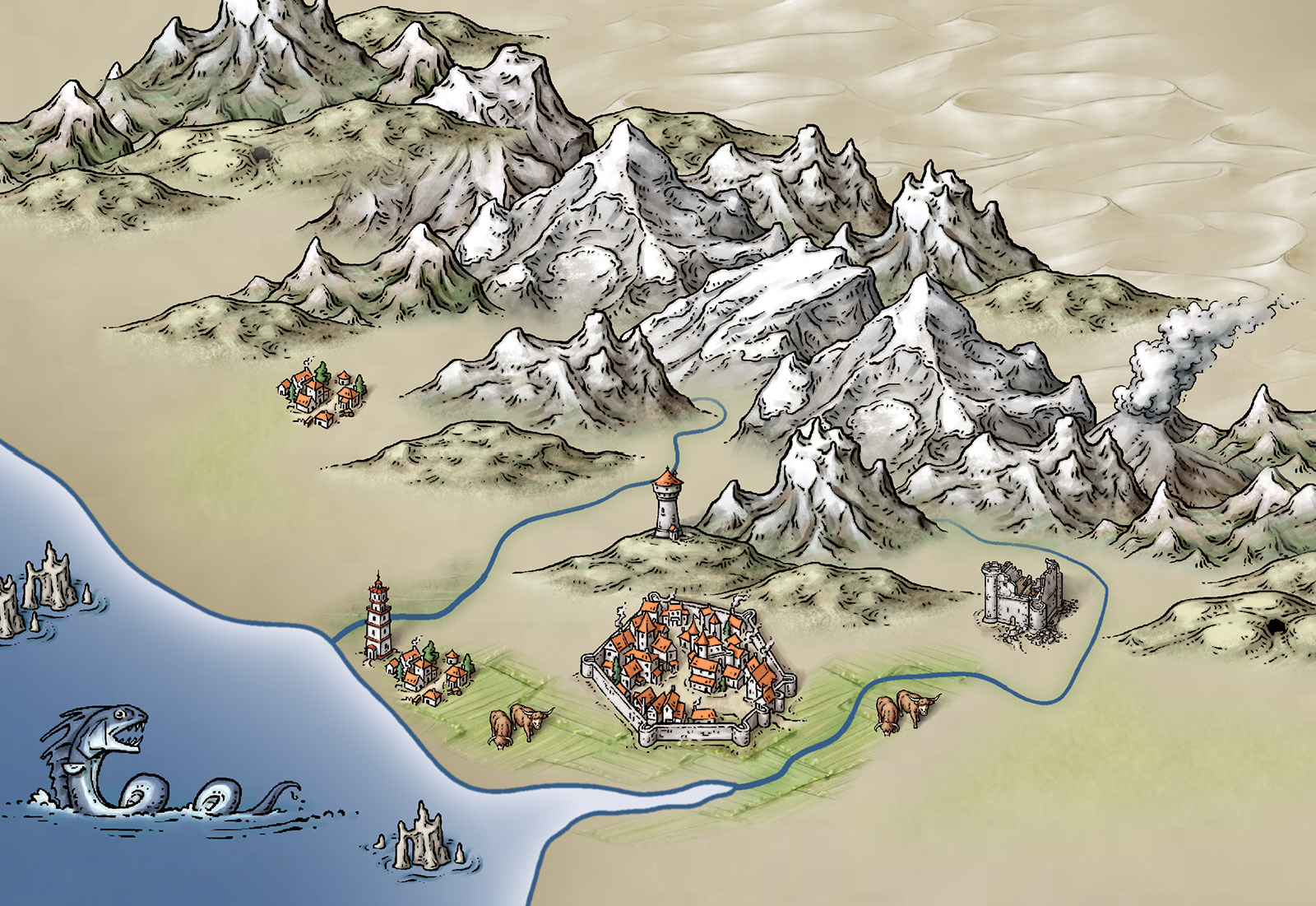
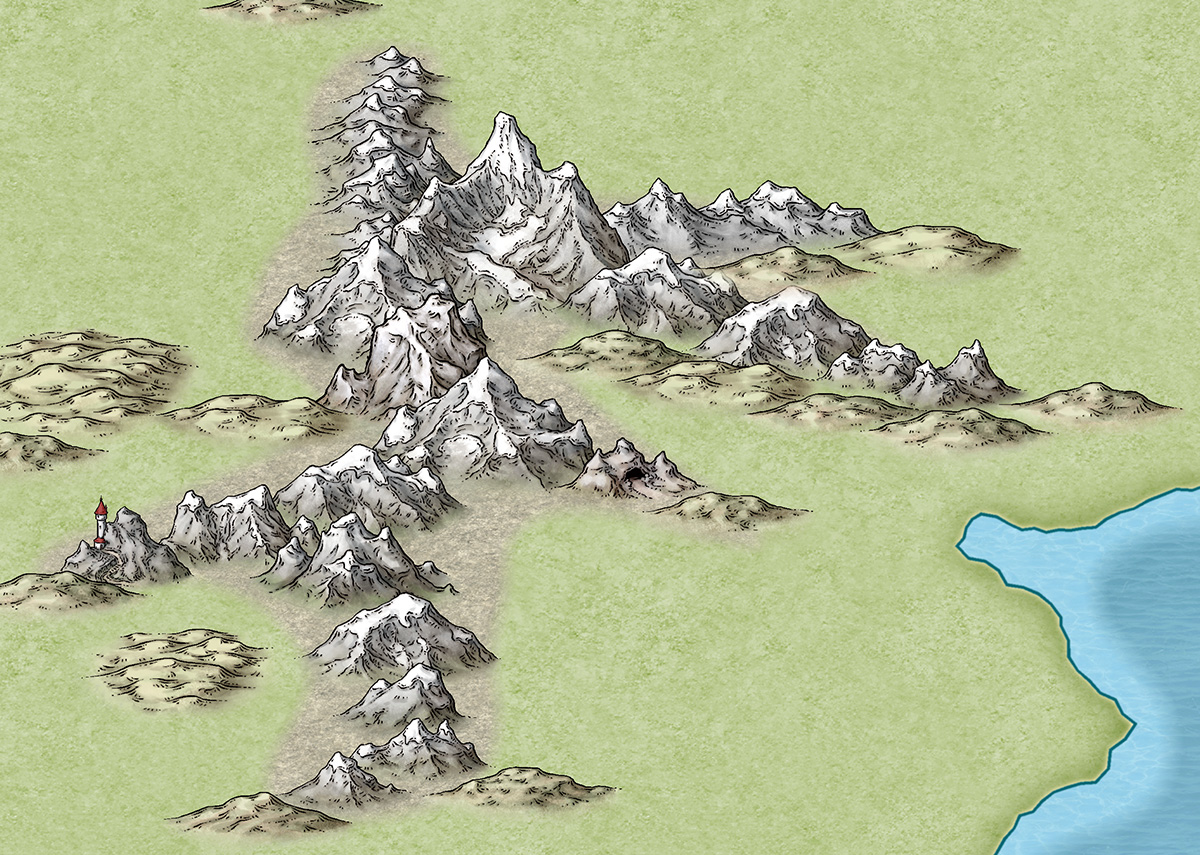
4. Ralf creates the full set of symbol catalogs in all resolutions, with varicolour areas.
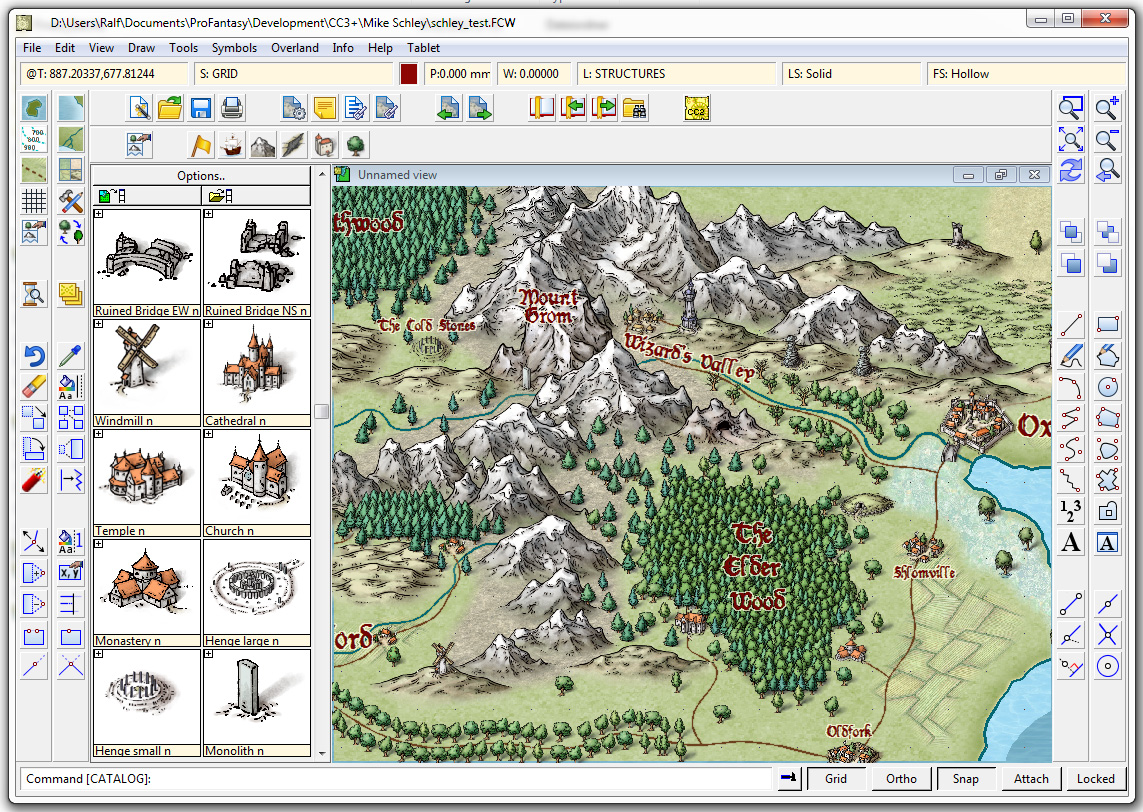
The very first example map we did with Campaign Cartographer was of my campaign setting, the Jaw Peninsula, and we intend to continue this tradition with CC3+. You can see the history of the map here and Ralf has rendered the eastern section of the map in his new style. Click the image for the full high-resolution map.

And here is a close up

And just to give you an idea of how detailed the symbols are – little works of art – here is a close up. Click for extreme close up.
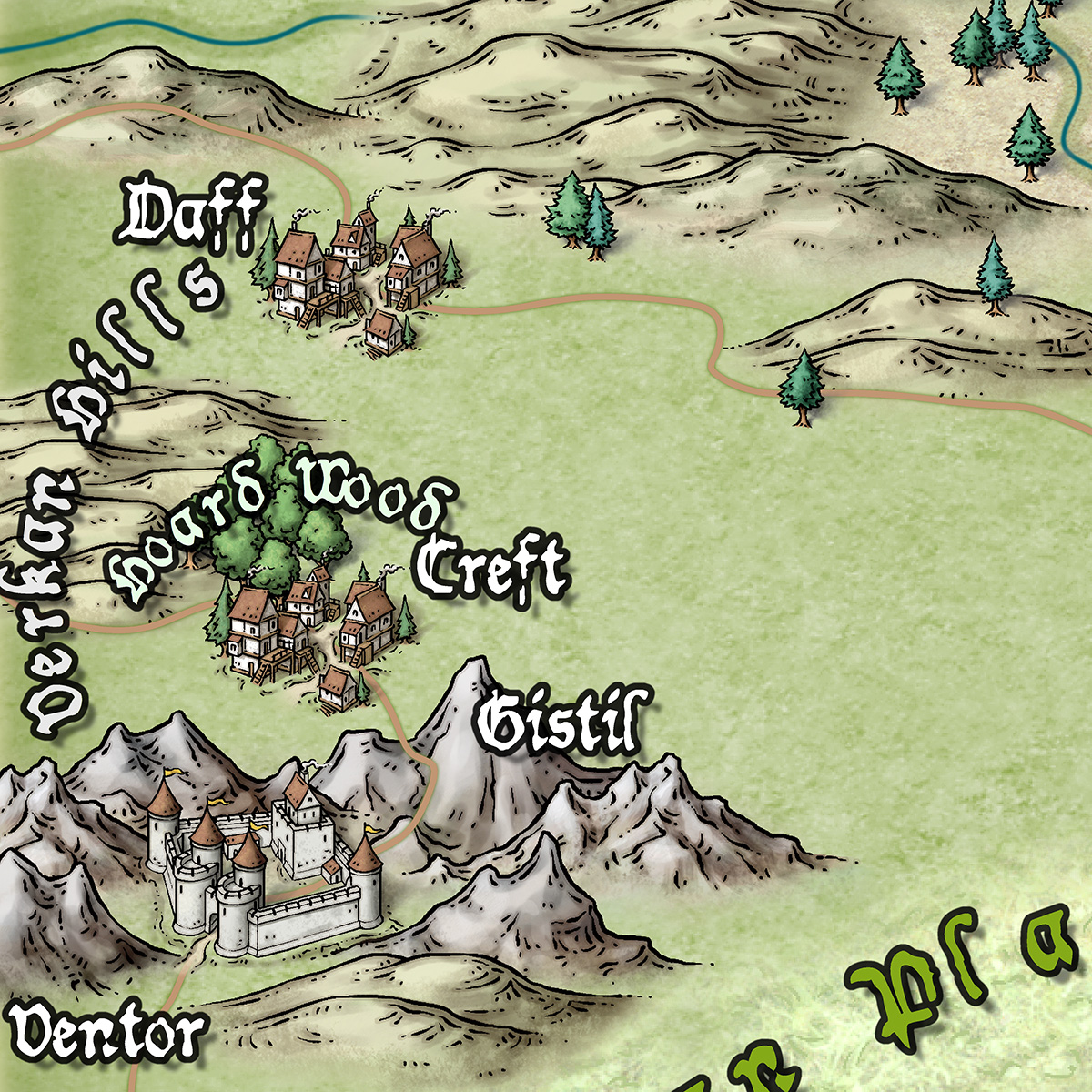
2 Comments
Simon Rogers | November 29, 2012 | cartographers, Mike Schley
[Ed: Mike Schley is a renowned game cartographer with clients such as Wizards of the Coast, Paizo and Scholastic and aworking on a complete new overland style for CC3+]
 As a professional artist, I’ve produced a large body of work over the past decade and a half for clients ranging from game developers to public universities. Most recently, the majority of my fantastical cartography has been for publishers such as Wizards of the Coast and Scholastic Books. The opportunity to work with Profantasy came as a wonderful surprise since not only does it allow me to develop what I believe will be an awesome new addition to Campaign Cartographer, but it will also let folks that already like my work use a new style of it to let their own imaginations run wild. What could be better than that?
As a professional artist, I’ve produced a large body of work over the past decade and a half for clients ranging from game developers to public universities. Most recently, the majority of my fantastical cartography has been for publishers such as Wizards of the Coast and Scholastic Books. The opportunity to work with Profantasy came as a wonderful surprise since not only does it allow me to develop what I believe will be an awesome new addition to Campaign Cartographer, but it will also let folks that already like my work use a new style of it to let their own imaginations run wild. What could be better than that?
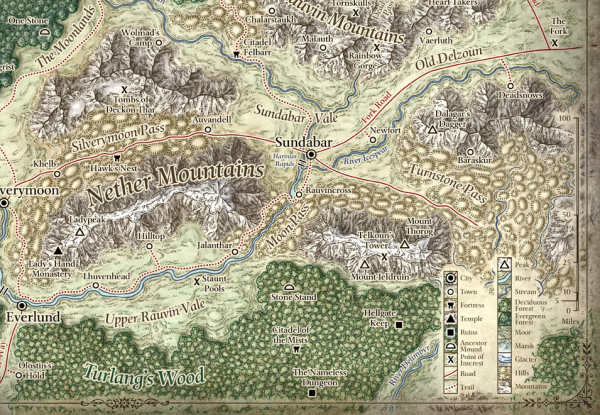
Years ago, when studying art in college, I would have never thought my career would develop into drawing intricate worlds and mythical lands. Now, as a full-time fantasy illustrator, I have difficulty imagining doing anything else. When I sit down to work every day, it’s like I’m transported back in time to being a kid again and drawing campaign maps for D&D or custom boards for all-night sessions of Risk. World building and visual storytelling are two of the most fun things I can imaging spending my days on and the fact that my audience gets a kick out of what I do is icing on the cake.

Combining the use of digital and traditional media, I try to convey a naturalistic visual style while benefitting from the clean and quickly editable properties of the digital format. For my work, it should look hand drawn, even if it’s done exclusively in Photoshop. I love the greats of the golden era of illustration like Rackham, Mucha, Pyle, and Wyeth and although I’m working in front of a screen and not an easel, it’s their art that informs my tastes. As for my cartography, it might also help that apparently I have ancestors such as Jacob van der Schley who also were enthralled by map making as far back as 18th century. Hooray for maps!
10 Comments





 As a professional artist, I’ve produced a large body of work over the past decade and a half for clients ranging from game developers to public universities. Most recently, the majority of my fantastical cartography has been for publishers such as Wizards of the Coast and Scholastic Books. The opportunity to work with Profantasy came as a wonderful surprise since not only does it allow me to develop what I believe will be an awesome new addition to Campaign Cartographer, but it will also let folks that already like my work use a new style of it to let their own imaginations run wild. What could be better than that?
As a professional artist, I’ve produced a large body of work over the past decade and a half for clients ranging from game developers to public universities. Most recently, the majority of my fantastical cartography has been for publishers such as Wizards of the Coast and Scholastic Books. The opportunity to work with Profantasy came as a wonderful surprise since not only does it allow me to develop what I believe will be an awesome new addition to Campaign Cartographer, but it will also let folks that already like my work use a new style of it to let their own imaginations run wild. What could be better than that?
